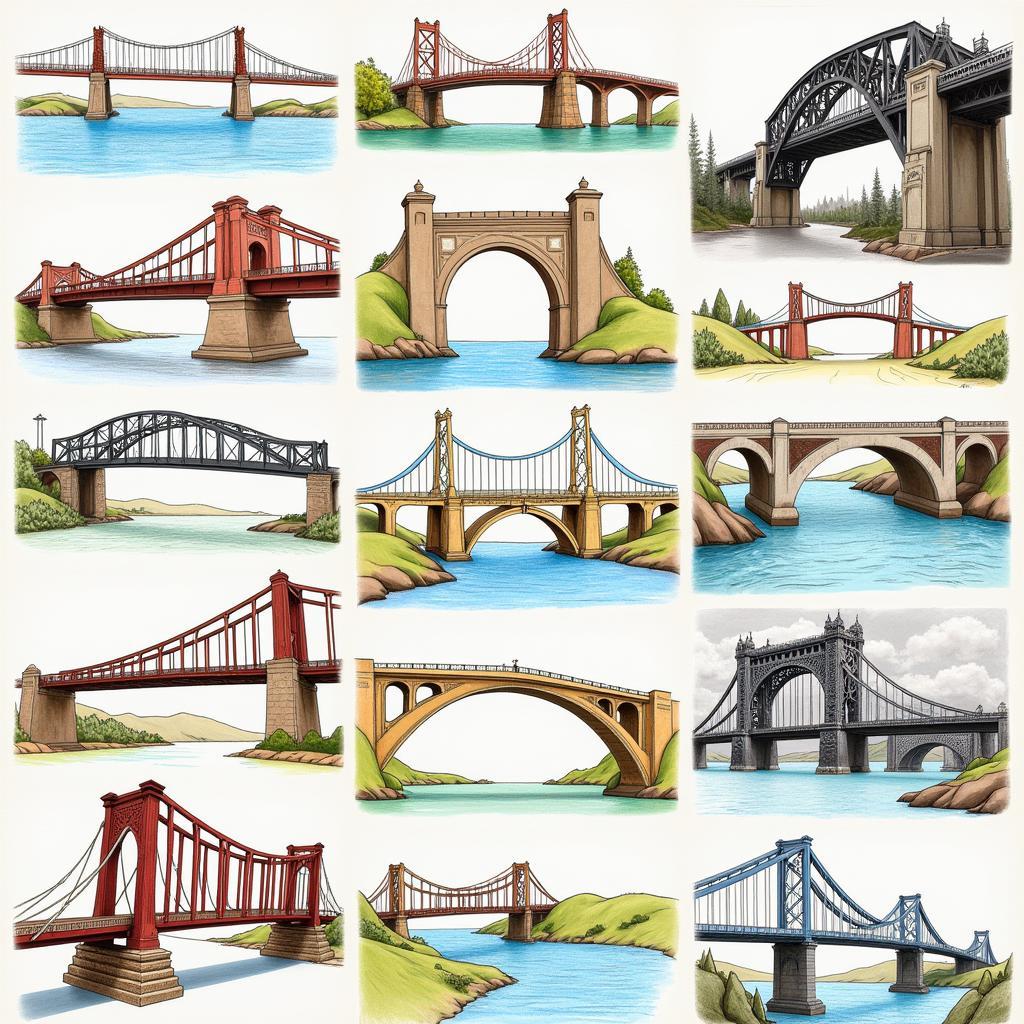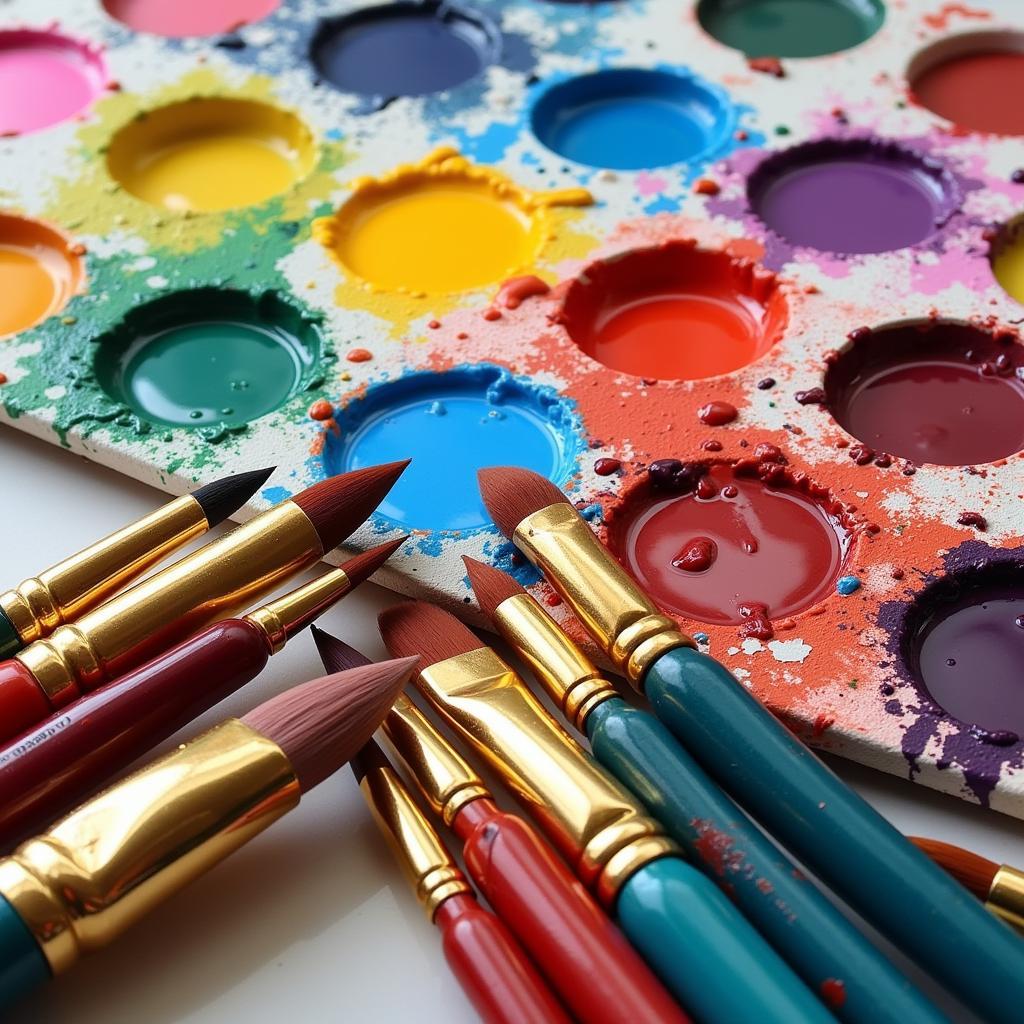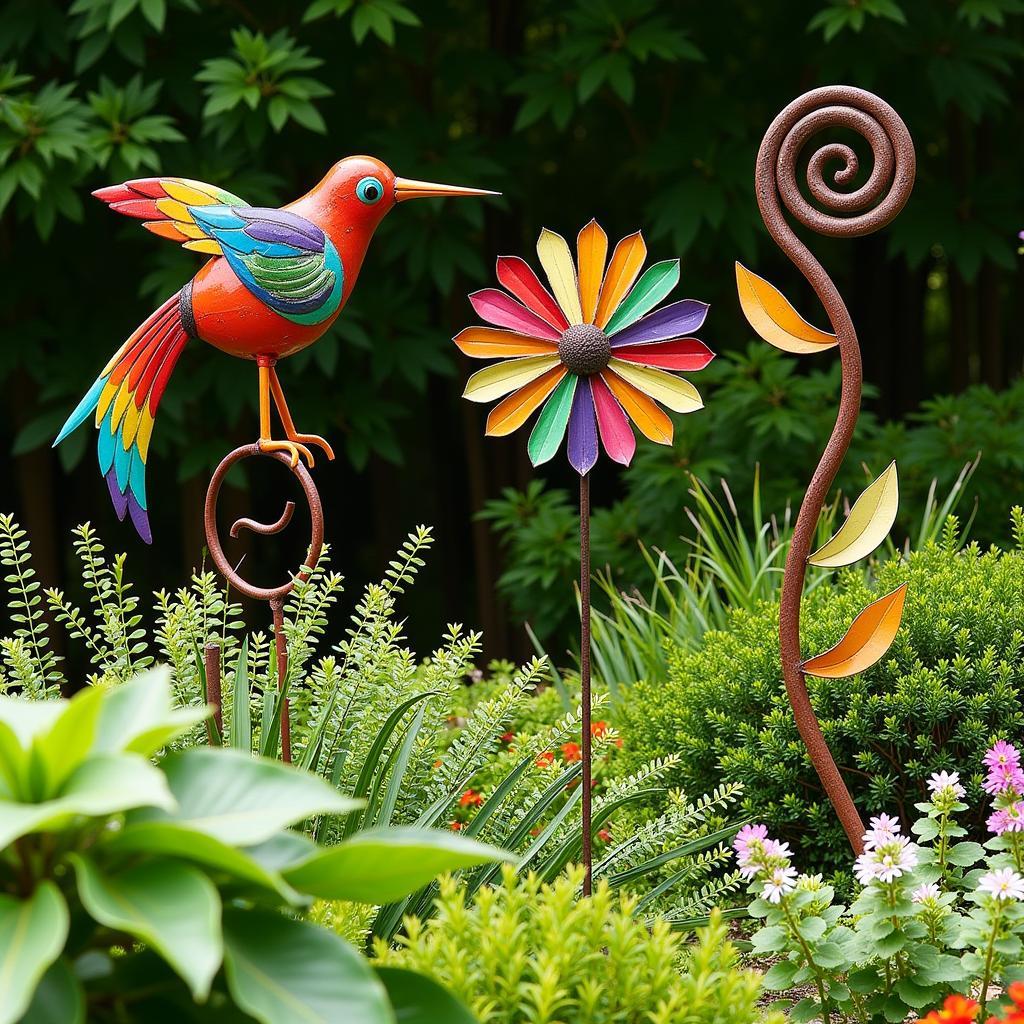Unveiling the Beauty of Floral Painting Art
Floral Painting Art has captivated art lovers for centuries, showcasing the delicate beauty and vibrant colors of nature’s blossoms. From classic still lifes to contemporary interpretations, floral art offers a diverse range of styles and techniques for artists and enthusiasts alike. This article explores the fascinating world of floral painting, delving into its rich history, diverse techniques, and inspiring possibilities. floral art paintings provide a captivating glimpse into the artistic interpretation of nature’s beauty.
A Blooming History: Exploring the Roots of Floral Painting Art
Floral motifs have appeared in art throughout history, from ancient Egyptian tomb paintings to elaborate Renaissance frescoes. The Dutch Golden Age, however, saw a particular flourishing of floral painting art, with artists like Jan van Huysum and Rachel Ruysch achieving international renown for their exquisite still lifes. These paintings often carried symbolic meanings, representing the fleeting nature of beauty, the abundance of life, and the delicate balance of nature.
What draws artists to floral subjects? Their inherent beauty, vibrant colors, and diverse forms provide endless inspiration. Whether it’s the delicate petals of a rose or the bold lines of a sunflower, flowers offer a rich visual vocabulary for artistic expression.
Diverse Techniques in Floral Painting Art
From watercolor’s delicate washes to the rich textures of oil paint, artists have explored a wide array of techniques to capture the essence of floral subjects. Watercolor allows for a luminous transparency, ideal for depicting delicate petals and subtle color gradations. Acrylics offer versatility and quick drying times, perfect for experimenting with bold colors and expressive brushstrokes. Oil paints, with their rich pigments and slow drying time, allow for layering and blending, creating depth and complexity in floral compositions.
Mastering Watercolor Floral Painting: Tips and Tricks
For beginners venturing into watercolor floral painting art, mastering a few key techniques can significantly enhance their artistic journey. Firstly, understanding color mixing is crucial. Experiment with different color combinations to achieve the desired hues and tones. Secondly, controlling water flow is essential for creating smooth washes and preventing unwanted blooms. Lastly, practicing brushstrokes, from delicate lines to broad strokes, allows for greater control and expressiveness.
What are the essential supplies for watercolor floral painting? High-quality watercolor paints, a variety of brushes, watercolor paper, a palette, and clean water are the basic necessities. Additional tools like masking fluid and a spray bottle can further enhance your artistic process.
Floral Painting Art in the Digital Age
With the advent of digital art tools, artists have embraced new possibilities in floral painting. Software like Photoshop and Procreate offer a wide range of brushes, textures, and effects, allowing for endless experimentation and creative expression. Digital painting also offers the advantage of easy editing and revisions, empowering artists to refine their work with precision. custom nail art designs are a contemporary example of floral artistry’s adaptability.
Exploring Digital Floral Painting: A Step-by-Step Guide
- Choose your software and create a new document.
- Select a digital brush that mimics the look of traditional media, such as watercolor or oil paint.
- Begin sketching your floral composition, focusing on the overall shape and arrangement of the flowers.
- Gradually add color and details, using layers to build depth and complexity.
- Experiment with different brushes and textures to achieve your desired artistic style.
Floral Painting: More Than Just Pretty Pictures
Floral painting art transcends mere decoration. It evokes emotions, tells stories, and celebrates the beauty of the natural world. Whether it’s a traditional still life or a contemporary abstract interpretation, floral art has the power to connect us to nature’s wonders and inspire a sense of awe and tranquility. Many find that engaging with floral painting, either as an artist or an admirer, can be a deeply enriching experience.
Conclusion: Embrace the Beauty of Floral Painting Art
Floral painting art, with its rich history and diverse techniques, offers a captivating journey for artists and art enthusiasts alike. From traditional mediums to digital innovations, the possibilities for creative expression are endless. Embrace the beauty of floral painting and discover the joy of capturing nature’s blossoms in your own unique artistic style. art flower wallpaper can bring the beauty of floral art into your everyday environment.
FAQs
- What is the best medium for floral painting? The best medium depends on your personal preference and artistic style. Experiment with different mediums to find the one that suits you best.
- How do I start learning floral painting? Start with basic tutorials and practice regularly. Observing real flowers and studying the works of master floral painters can also be incredibly helpful.
- Where can I find inspiration for floral painting? Nature is the best source of inspiration. Visit gardens, botanical gardens, or simply observe the flowers in your surroundings.
Related Questions
- What are some common mistakes to avoid in floral painting?
- How can I improve my composition skills in floral painting?
- What are some contemporary trends in floral painting art?
Explore related articles on our website, such as nail art prints and art painted doors. For support, contact us at Phone: 02462573573, Email: [email protected] or visit us at Savico Megamall, 7-9 Đ. Nguyễn Văn Linh, Gia Thụy, Long Biên, Hà Nội 10000, Việt Nam. We have a 24/7 customer service team.


